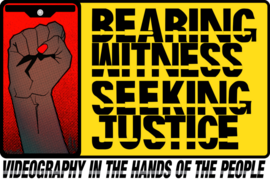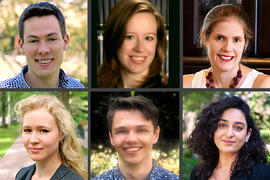Sulafa Zidani is an assistant professor in the Comparative Media Studies Program whose work focuses on digital culture: the social, political, and cultural dynamics in which technology operates and the role it plays in transnational power. She is working on her first book, which focuses on multilinguistic memes and centers the creators of these memes. By looking into the lives and work of these global meme makers, the book tells the story of globalization in the digital era as it is expressed through untranslatability, feelings, and humor.
Zidani spoke with SHASS Communications about her research and her experience at MIT.
Q: The intersections of the technological and the creative are central to your work. How does the interdisciplinary nature of an MIT education lend itself to this kind of humanistic and technological thinking?
A: This is my second year at MIT, and in that time I have I seen how aligned MIT’s educational approach here is with my work. Studying technology and culture from a critical transnational perspective, I believe it is crucial to be part of conversations that cross between disciplines and departments, conversations where the designers, engineers, and entrepreneurs of tomorrow are learning critical perspectives and confronting ethical dilemmas. MIT is the place where these conversations are taking place. I have students in fields ranging from business to engineering, biology, to astrophysics. Together, we examine some of the urgent questions our society is facing: What characterizes online cultures today? How did we get to this place where misinformation and racism spread widely online? What makes some online spaces more connective or more divisive?
One of the aspects I appreciate the most in MIT education is the push for thinking about solutions. When confronting difficult questions, it is understandable that many of us get stuck in the challenges of the present. Yet, MIT students demonstrate in my class that they have a forward-looking approach that continually returns to questions like: How do we make things better? How do we create better content or invent better technology without replicating existing problems? In this way, MIT is a great place to enhance prolific thinking around technology and culture.
Q: Online civic engagement is a central part of so many people’s political experience and exposure — and you examine this engagement on a transnational scale! How do you approach online fieldwork, especially engagement on issues that rely on local nuances and humor, remixed with transnational culture? How are various kinds of power at play in those exchanges?
A: In my work on transnational online civic engagement, context is key. Oftentimes in research, when we scale up to large datasets or transnational case studies, we compromise on a deep and intimate knowledge of the data. In my work, I maintain a global scale while also centering knowledge of the context that the data is stemming from. I research internet content in languages that I speak, from places in which I have lived, and cultures which I know through my heritage knowledge, lived experience, and my education.
Context helps us understand research data better. For example, in my paper on mashup and remix culture in the Middle East, I examine memes and videos in Arabic. My understanding of the language and culture helps me identify what hides between the lines, that might be based on the accent being used, terms that are specific to a region, to a generation, or to a subculture, and the political backdrop that online content might be conversing with. This is especially important in humor, which relies on unstated aspects to provoke laughter.
Another reason that context is central in my work is because symbols we use in one place might not hold the same meaning in a different context. One example which demonstrates this difference is the image of Pepe the Frog, which I discuss in an interview with journalist Nancy Guan. In the context of the U.S., the image of Pepe the Frog is mostly used in misogynist and antisemitic alt-right memes. However, in Hong Kong, the face of Pepe the Frog shows up in memes, graffiti, and protest signs as a representation of pro-democracy activists.
Researching everyday communication is fascinating. To truly understand power in these kinds of mundane-yet-creative forms of content, especially to understand the nuance around them, we must spend time getting to know the history that led to them and the events and culture occurring around them.
Q: You’ve written on decolonizing syllabi in media, communications, and cultural studies. What does that process of inclusive pedagogy look like in the classroom? What has been your experience of bringing that pedagogy to MIT?
A: My approach to inclusive pedagogy is centered around embracing differences, which I interpret as inviting our differences into the classroom rather than pushing them out in favor of consensus. In the first few weeks of class, as everyone is getting to know one another better, I pay special attention to the knowledge and experience that students already have. I then guide students to connect concepts to their existing knowledge, be that their life experience or knowledge they acquired in other classes. I’ve found that this method enriches our class discussions and leads to a deeper understanding of the course material.
In terms of pedagogy, working with MIT students has been an intellectual delight. I am regularly amazed at the variety of skills students bring to the class and their eagerness to engage in discussion. Students add in perspectives based on their interests, their majors and minors, and their desired career paths. They do this by raising questions that concern them, like “How do we build a better social media environment?” and by sharing their experiences being part of social movements or fan cultures. Since I aim to bring a global and critical perspective into my classes, MIT’s diverse student body means that students can also add some contextual knowledge or draw our attention to important relevant events taking place in other places around the world.
Many media studies courses, especially foundational and introductory courses, have traditionally favored perspectives that center what we call the “Western” world, especially scholarship produced by white European and North American men. Such syllabi present this type of knowledge as the canon, which then puts knowledge produced by women, Indigenous people, Black people, and other people of color — both in and outside of “the West” — as less important. Many academics have tried to address this by adding one week in their syllabus with readings from underrepresented perspectives, but I think this type of solution can cement the view of these perspectives as marginal. I have written more about this in my article in Media, Culture & Society where I suggest actual strategies for creating more inclusive syllabi and classrooms.
While one syllabus or one class cannot alone rid us of the shadows of colonialism that we have inherited in higher education, I believe that centering our students is a great place to start.










